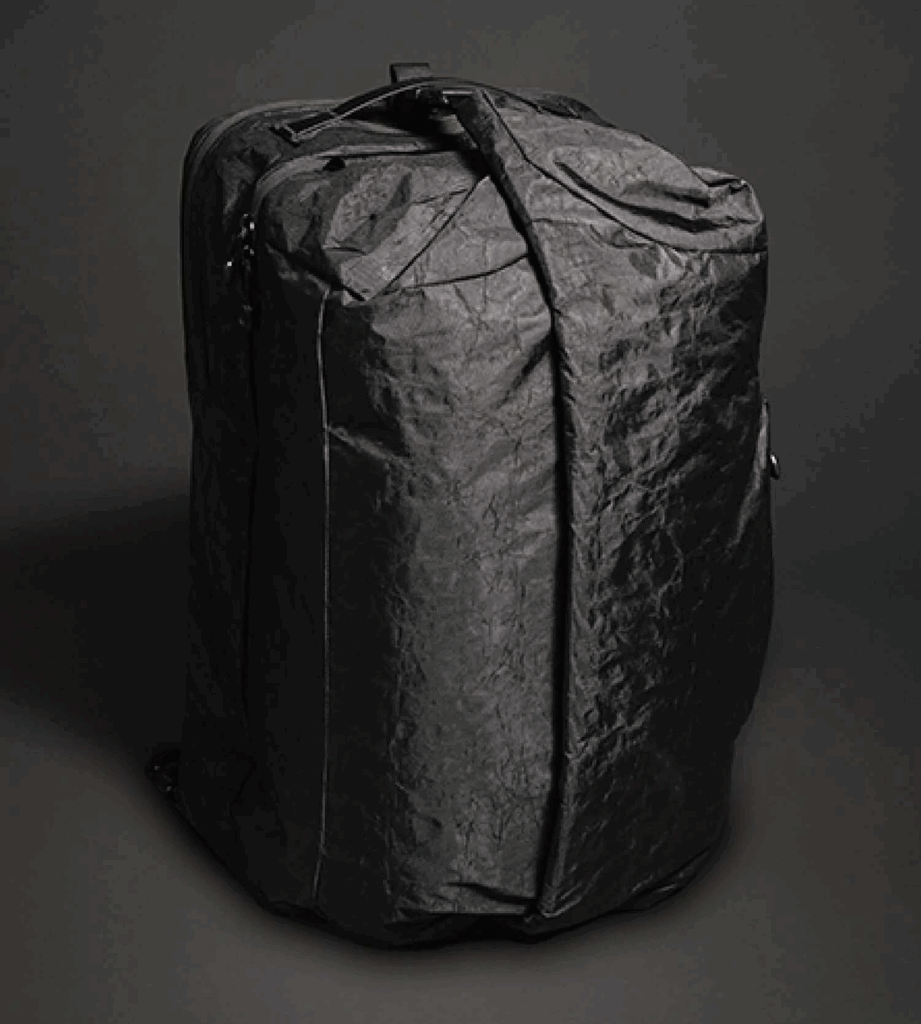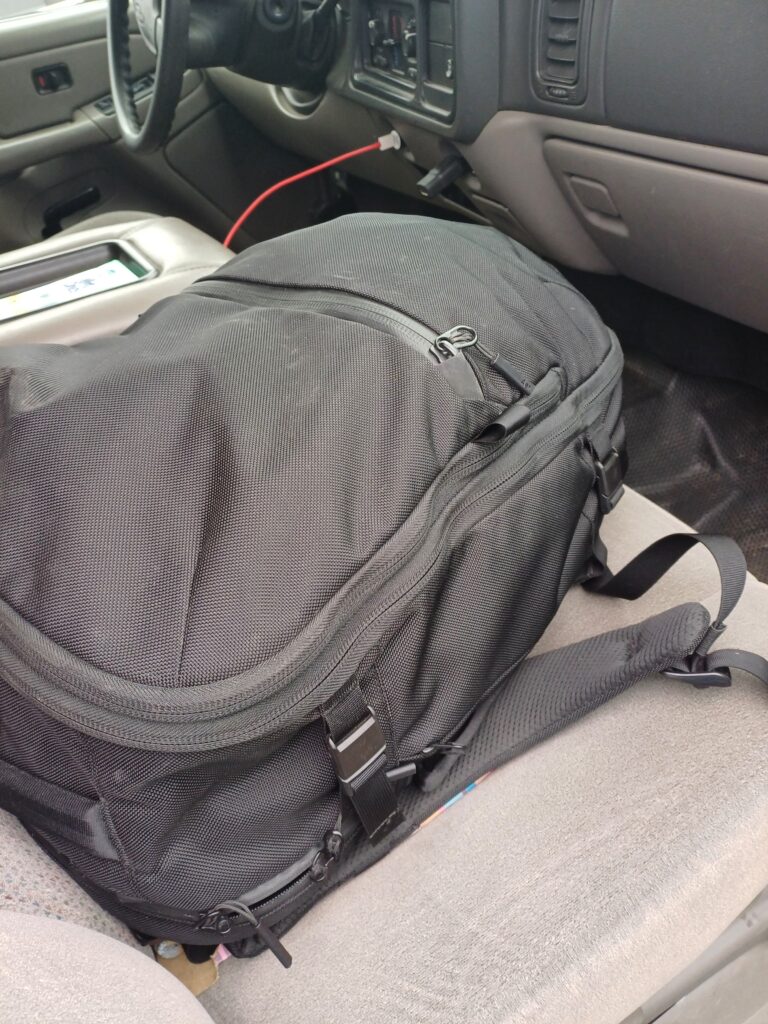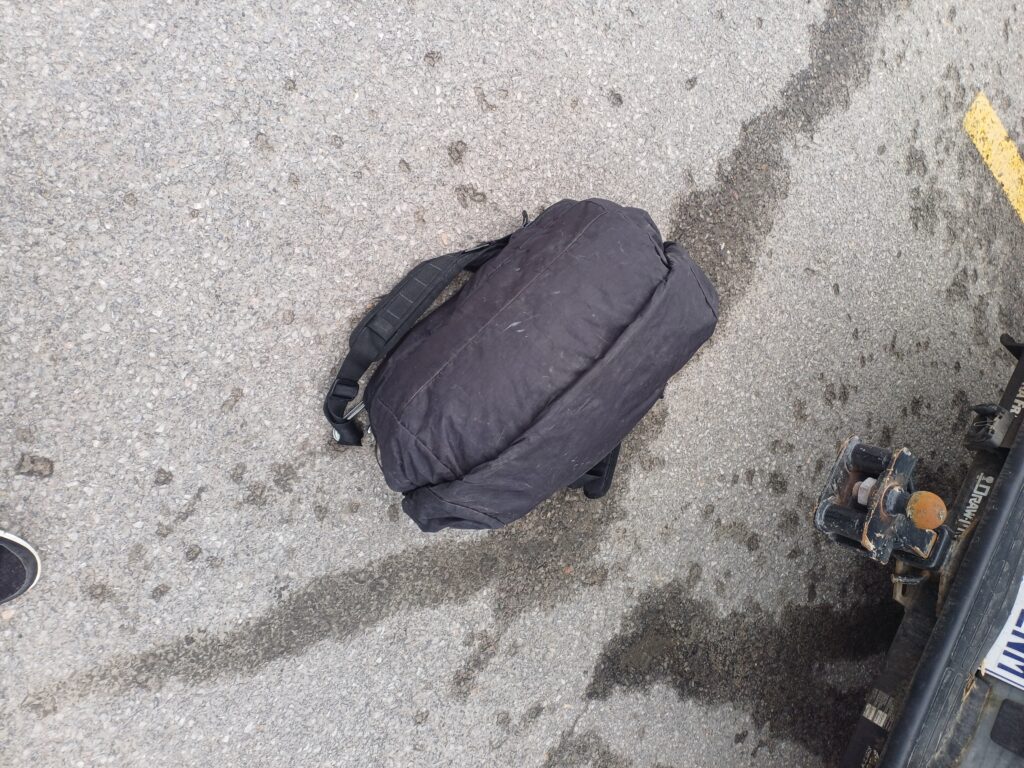

Two years ago, I bought two travel backpacks – big enough to make a weekend suitcase, but small enough to pass the airline “carry-on” test. I bought the Travel Pack from AER and the Mile One from Black Mile. Both impressed me as well-organized, discreet-looking bags (black, no visible markings, etc.).
The former is a hyper-organized backpack, while the latter is a simple, waterproof, larger-volume bag. While I had planned to use just one bag, the realities of sailing led me to often bring both: one for instruments, the other as a suitcase. Two years later, I use the Travel Pack every day as an everyday backpack, including short weekend trips, while I use the Mile One when I need an extra bag. The former is extremely well organized.
Travel Pack
The Travel Pack is an organized backpack that I believe was designed primarily for photographers. The bag’s exterior is made of high-density Cordura, making it extremely robust. The straps are high quality and padded. The interior is made of padded nylon, which is softer and designed to protect the interior. On the outside, the bag features an adjustable water bottle holder, large enough for a full-size Nalgene bottle, and a mini-compartment for sunglasses. The bag is not waterproof, and it would be a mistake to leave it in the rain for more than an hour.
The bag is divided into three compartments, each accessible via zippers. The lower, padded compartment holds tablets and a laptop. The compartment features a nylon divider to hold both a computer and a tablet without rubbing. It’s large enough for a 16″ laptop and a full-size tablet. It also includes a “hidden” compartment for your passport (or credentials). The zipper accessing this layer is waterproof, offering additional protection from the rain. Two years later, it’s still functional, but accumulates salt and dirt more than the others.
The middle compartment is the main one, padded, and serves as a suitcase. It opens fully with a three-sided zipper for easy storage. Travel Pack sells padded compression bags for this compartment, mainly intended for photographers, to store lenses or objectives. I use it more as a tote compartment, sometimes for clothes, sometimes for books or documents.
The east zipper on the main compartment is large and sturdy. Two years later, it still looks like new. The compartment is framed by compression straps, making it possible to reduce the size of clothes. The main compartment also includes two sub-compartments: one hidden and the other for documents. These sub-compartments are relatively small and I don’t use them much.
The last compartment is for everyday equipment: cell phone, pencils, charging cables and so on. It’s well organized and can hold a lot of gear. That said, when it’s loaded, the fact that it’s on the opening panel of the main compartment makes it rather annoying: it collapses when the main compartment is opened and the latter can then empty out.
I used the bag a few times on weekend trips. I could easily carry enough clothes and office equipment for work. That’s not to say that you shouldn’t optimize what you bring, but with the right choices, you can easily make a weekend away without too much hassle. I don’t know what else to say, other than that it’s a very good quality, well-organized bag that can be used for many purposes. It’s a durable product.
Black Mile Mile One
Black Mile’s Mile One is essentially a large, waterproof messenger bag. It’s made from three layers of material, including dyneema and waterproof latex, making it waterproof. At first glance, it looks like a typical waterproof bag sold to kayakers. The outer layers are rigid and, with time and movement, tend to delaminate.
Two years later, the bag is still waterproof, but the outer material shows significant signs of the wear and tear associated with delamination. The straps are simple and attached to the bag by carabiners, making them easy to reconfigure (backpack or messenger bag) or remove. They are, however, uncomfortable. Leaving a hike with a full bag would be a recipe for shoulder pain.
The bag is divided into three compartments. The first, close to the shoulder straps, is for a laptop. It’s not padded, so you have to be careful when placing your electronic devices in it, to the point where I no longer put my laptop in it. The compartment easily accommodates a 16″ laptop. The second compartment is a mini-case about two inches thick. It’s accessible via a zipper that opens the bag on three sides. The zipper is waterproof and of high quality.
The empty interior compartment is made of nylon. I most often store clothes in it, but the interior zippers, of average quality, suggest not to force the storage capacity too much. The outer compartment is a waterproof bag that opens and closes with a typical waterproof bag opening: by rolling the opening back on itself so that the bag itself acts as a watertight seal. It’s a proven concept that works very well.
Overall, the bag performs relatively poorly as a backpack. When fully loaded, the main pocket is pulled away from the shoulders and held in place only by the watertight seal. As a result, weight collects at the bottom of the bag and away from the spine. Combined with the painful shoulder straps, this doesn’t make for a functional backpack. It certainly makes for a disappointing first few months of use. Two years later, I’m thinking of it more as a waterproof bag that doubles as a suitcase, but there are probably other bags out there that are cheaper and serve the same function.


Conclusion
The AER Travel Pack is very good. It’s a product I recommend for its durability, thoughtful configuration and innocuous look. I don’t recommend the Mile One. For the features it offers, you can find a lot cheaper.
There are probably other good bags out there, and I’m certainly not one to sanctify my gear to the point of religion. That said, the AER Travel Pack is a high-quality find. Like the Casio Pro-Trek, which I recommended a year ago, it’s a well-thought-out and relatively innocuous product.



